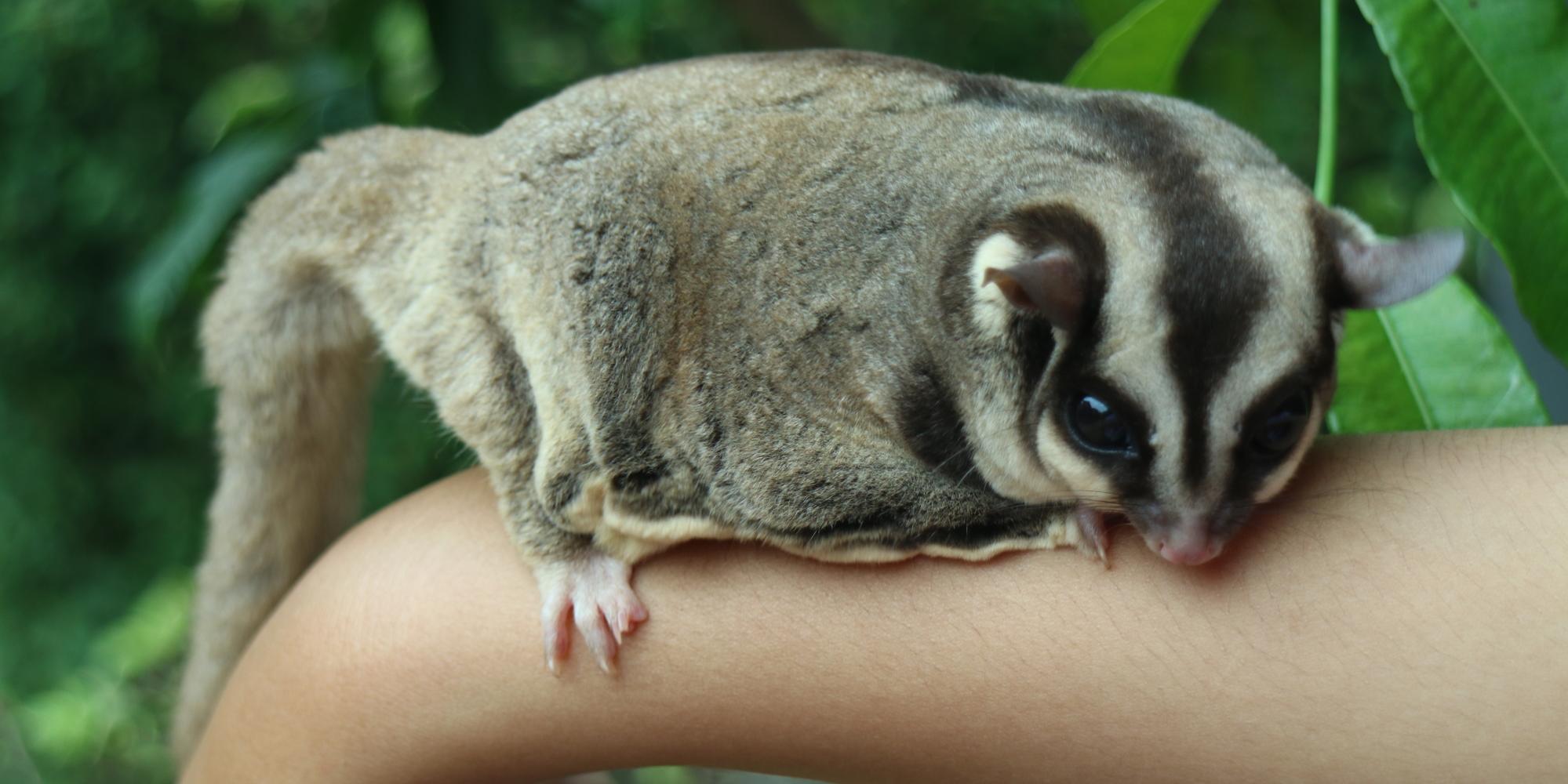


The female is still undergoing handling training by our senior handlers since she is very skittish but the male excelled right away with handling. We were successful with putting weight on the female but are still working on a healthy weight for the male (slight decrease, but still obese). Our male is very overweight (came to us large) and the female was underweight.

Always ensure that your future pet has not been taken from the wild.The bag can be opened and turned back to show the animal. The snuggle sack mentioned above allows for public viewing while making the animal feel more comfortable.Some facilities have trained gliders to glide from the hand to a perch (i.e., Chattanooga Zoo).Using gloves may be an option but gloves also seem to make some individuals more nervous when being handled. This species has a high incidence of biting handlers.If handled frequently and gently, some individuals have worked well in hand for program use.This species is small and fast moving which can be a challenge for animal handlers.This allows them to demonstrate climbing behavior while keeping them visible for the audience. Sugar gliders also do well with being presented on a branch or stick, held by either one or both ends by the presenter.For example, Binghamton Zoo at Ross Park uses a cylidrical mesh pop-up cage. Presenting in clear containers like “Kritter Keepers” with climbing opportunities for display has been successful if handlers aren’t comfortable with presenting in the hand.Programmatic Information Transportation Temperature Guidelines

Other reinforcers yogurt or grape juice via syringe, hard boiled egg and dried cranberries.We use a variety of reinforcers such as mealworms, sugar glider nectar, or pieces of favorite food. At the Baton Rouge Zoo we have trained our gliders to wear a harness for presentations.Commercially available “snuggle sacks” work to familiarize the glider with the scent of a new handler.In captivity, sugar gliders are fed baby juice, sugar glider biscuits, crickets, mealworms, fruits, and vegetables.In the wild, sugar gliders eat sap, blossoms, nectar, insects, and small invertebrates.A multi-level enclosure with a variety of climbing structures can help provide exercise.Order: Marsupialia Husbandry Information Housing Requirements


 0 kommentar(er)
0 kommentar(er)
